Top 10 Prophets, 👁👁 Prognosticators, & Visionaries #3
5) Leonardo Da Vinci & 6) Nostradamus ⚡

I'm compiling a lightning list of the Top 10 Prophets of All Time.
In case you missed it, here are the Oracles of Delphi and the Sibyls of Rome profiled in Part One 👇
And this is Part Two, with profiles of the Maya and Hildegard of Bingen. 👇
These portraits are presented in chronological order (not cataloged by the historical significance of these visionaries), and so now, halfway through our list, we've just emerged from those troubled times of the Middle Ages!
⚡😁👍
I present to you...
#5) Leonardo Da Vinci— 1452-1519
No one personifies ‘Renaissance Man’ like Leonardo Da Vinci. Besides being a renowned painter and sculptor, he was a scientist, an inventor, and he gained fame as an eerily prophetic thinker.
The period known as the Renaissance lasted from the 14th to the 17th century. Everything was in a state of flux. Explorers were forcing maps to be redrawn, revealing the world was far bigger than once believed. Scientific discoveries and unprecedented achievements in the arts, especially in Italy, suggested that human potential was virtually unlimited.

Born in 1452, Leonardo Da Vinci was different from other people in virtually every way. He was illegitimate, which denied him certain privileges. He was left-handed, which was seen as the trait of a devil-worshipper. He received only a basic elementary education typical for boys—reading, writing, and arithmetic. He never attended a university. When Leonardo was fifteen, he became the apprentice of a local artist, who fostered Da Vinci’s developing artistic genius. In was in that workshop that Leonardo began studies that would ultimately result in the masterpieces that were the Mona Lisa and The Last Supper.


In a foul-smelling age, he was fastidious. He was a homosexual, an offense punishable by death. Surrounded by heavy meat-eaters, he was a vegetarian. He believed that in the future, killing animals would be considered a crime. He was a logical man who used scientific investigation— a new kind of thinking that was banned.
Rumors constantly circulated about Leonardo. It was said he put science above Christian faith. It was said his hubris was so great, he saw himself as God, the ultimate heresy. Church officials felt that their authority was threatened by him.
In truth, while he didn’t conform to any organized religion, Leonardo was a believer, to the extent he was jealous of God. He said, “I wish to work miracles.” God was a far better inventor than him, in Leonardo’s estimation.
Seeming possessing superhuman patience, Leonardo applied his diligence to systematically investigating a host of different topics. He started with nature, and then imagined futuristic inventions, amassing over 5,000 pages of drawings. He drew things that wouldn’t be realized for hundreds of years, including cars, expressways, bicycles, submarines, helicopters, airplanes, parachutes, life preservers, contact lenses, automatic door closers, prefabricated houses, burglar-proof locks, steam engines, and tanks. His technical drawings were elegant, precise, and startling in their scope and vision. He had a loosely arranged Encyclopedia of Everything. He proclaimed…
“So many things have been unknown or misinterpreted for centuries!”
His notes were written backwards or in symbols. His tiny brown writing went from right to left, necessitating others to peer into a mirror to read it. Always concerned about his privacy, he was especially paranoid about getting caught challenging the creation story in Genesis. It seems no coincidence that his earliest inventions were conceived to aid in escape from imprisonment.

Throughout his mind-boggling notebooks, he asked the tough questions. Like, ‘Why do we laugh when we’re tickled?’ and ‘How might cold and hot running water be installed in a house?’ and ‘Why the hell can’t a human being fly?’ (I put the "hell" in that last one because I know Da Vinci's frustration.)
Leonardo entertained different hypotheses and tested them to acquire firsthand experience. For example, in order to do complex medical drawings, he dissected corpses, sometimes spending a week or more laboring under conditions that most people would never tolerate. All autopsies were forbidden by the Church, but Leonardo performed at least thirty, resulting in illustrations of extraordinary accuracy. He made breakthroughs in osteology, neurology, cardiology, and especially ophthalmology (the study of the eye.)
It was widely believed at the time that eyes projected particles that create what we see! Leonardo understood that the eyes received light rays. It was widely believed that light filled all the world in a single instant. Leonardo postulated that light traveled. He could explain why the sky is blue. He understood why stars were invisible by day. He created a way of observing an eclipse of the sun without damaging the eyes. And he knew when men eventually landed on the moon exactly what they would see from that vantage point: the Earth.
Among Leonardo’s drawings are diagrams for drainage, irrigation, and canals. He envisioned a self-propelled ship powered by paddle wheels three hundred years before steam paddleboats were invented. He envisioned “Floats for Walking on Water”, the life preserver, and the snorkel.
Leonardo revered peace and considered war to be bestialissima pazzia, a “beastly madness.” Despite that, he was prophetic when it came to military inventions. He designed explosives, battering rams, a way to tunnel noiselessly, even machine guns. His sketches for tanks show four-wheeled vehicles shaped like flying saucers that are heavily fortified. Tanks didn’t actually appear on a battlefield until four hundred years later, in World War 1.

Da Vinci was especially pleased with two of his inventions above all the others. One was his design for a submarine, which he was always worried that his enemies would steal. He was frightened that if someone had his designs, they could figure out how to punch holes in the underwater ship, drowning the people it was meant to protect.
His other great love was flying. He had been preoccupied with flight since he was a teenager. Four hundred years before the Wright Brothers, he knew heavier-than-air constructs could be made to soar. Initially, he thought arm movement was key, like the flapping of a bird’s wings. But then he realized in more detailed observations that the truly powerful muscles in a bird weren’t its wings; their legs held the real strength. He tried all different kinds of materials: canvas with feathers, leather smeared with grease, strengthened pinewood. He experimented with different shapes: butterfly-like wings, a rowing machine, a windmill, a canoe, what looked like a modern hand glider. He tried different mechanisms: harnesses, sails, pedals, rudders. He even considered safety devices like an air-filled wineskin strapped around the waist to be used as a buoy if a water landing was necessary.

While most of his flying machines never worked, Leonardo’s work sparked the imaginations of others. Even Leonardo’s paintings of angels showed them making aerodynamically correct landings, exhibiting that he clearly understood the basic principles of flight.
If that wasn’t enough— he invented a way to make gold sequins for women’s clothes (and that didn’t tip anyone off that he was gay? 😉) He invented the basis for modern map-making. And since he had real trouble getting out of bed in the morning, he invented an alarm clock powered by water.
Leonardo never published any of his notebooks. He was extremely secretive. After his death in 1519, his work was scattered or destroyed. It wasn’t until 1800 that his achievements came to light again, inspiring other visionaries. The thirty-one notebooks that have survived to the present are priceless.
Leonardo’s most famous surviving notebook is called the Codex Leicester. It’s currently owned by the founder of Microsoft, one of the richest men in the world. Bill Gates purchased it in 1994 for $30.8 million. Gates tells stories of first learning of Leonardo at the age of ten. Said Bill...
“Da Vinci is someone I have admired since I first read about him. He talks about major things to come… in a clear, terse fashion.”
The things Leonardo foresaw showed uncanny presentience. To Leonardo, it was seeing that was the key to understanding.
“Knowing how to see” was his great goal.
Many people throw stones into water to watch the ripples. Leonardo defined the principles of waves in his notebooks by noticing the exact patterns of the rings.
Leonardo Da Vinci needed an alarm clock, which is ironic when you consider he was called, “a man who wakes too early, while it is still dark and all around are sleeping.”
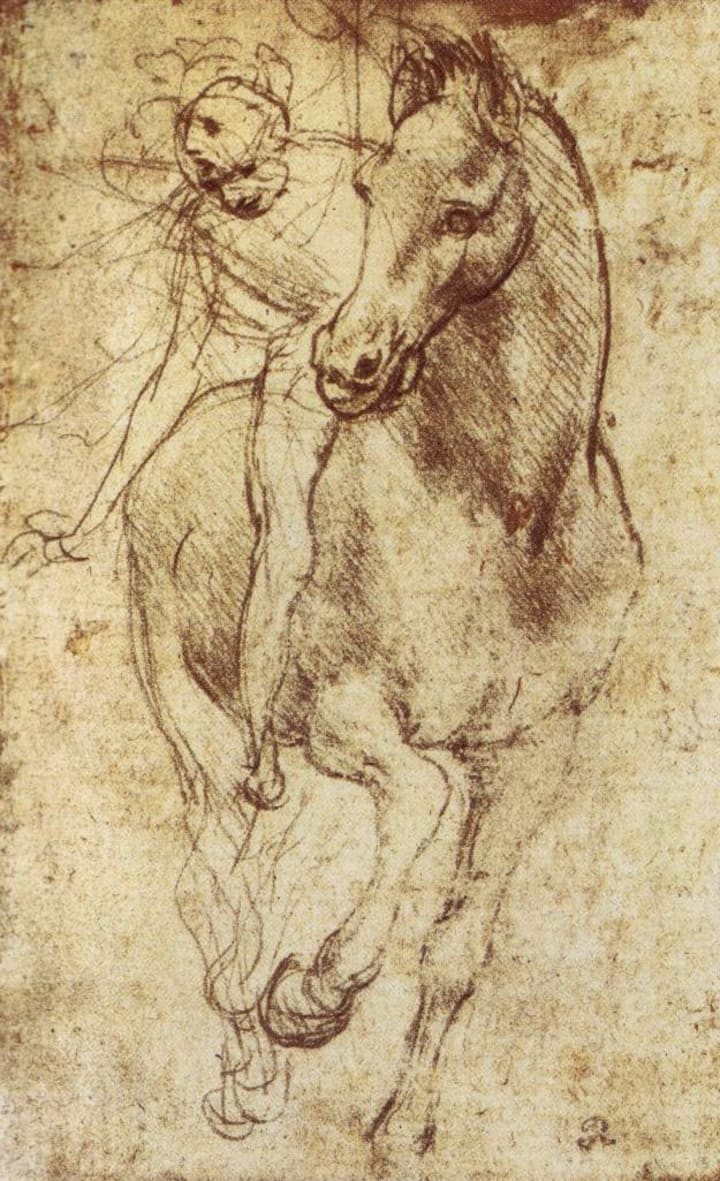
#6) Nostradamus – 1503-1566

In the 1500s, the largest country in Europe was France. Farmers there had improved their methods. Times were still troubled, but food was much more plentiful. People lived longer and prospered. Religion no longer held such sway over people’s daily lives. The first steps were being taken that would result in a separation of church and state. People could chose which religion they wanted to follow. Still, one religious group was prone to murdering or torturing people of other orders. Protestants and Catholics fought bloody battles against each other. Both groups persecuted Jews.
Throughout the Renaissance, people had an avid interest in the occult, which was then extremely popular. Religion divided people. Astrology— not as much. At one point in Paris, even in this enlightened age, there were 30,000 fortune tellers making a living. Queen Catherine de Medicis had at least four astrologers in her court. And then there was a French doctor named Michel de Nostredame—also known as Nostradamus—who became world famous with his startling predictions.
He was born in 1503 and he grew up an outsider because his parents were secretly Jewish. They practiced their faith in hiding after publicly converting to Catholicism to avoid being banished. Even in school, he fervently believed in the Copernican theory that the earth was round, which angered the priests who were teaching him. In medical school, he picked up the nickname “Little Astrologer.” What was called “celestial science” was perfectly acceptable in this era and was even part of basic medical training. Of all students, however, no one was more devoted to his studies than Nostradamus.
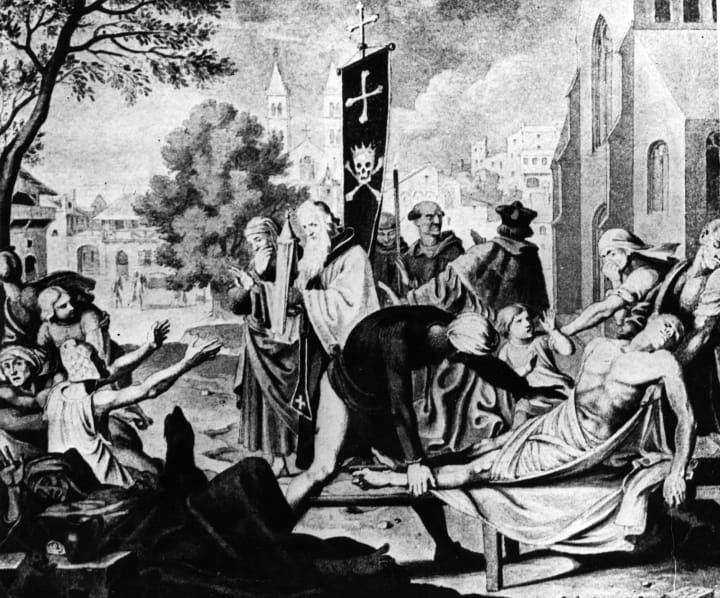
During this time, bubonic plague was sweeping across Europe and Asia, killing millions of people. Nostradamus was a specialist in this highly infectious disease. The Black Death, as it was called, inflicted its victims with large black blisters and other horrific symptoms.
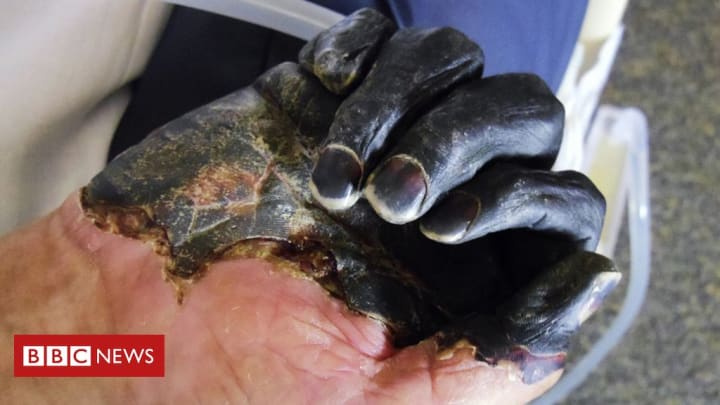
Doctors tried everything they could think of to treat the plague, including bleeding people. Guided by Islamic materials he had read, Nostradamus prescribed clean water, fresh air, and a rose pill he became famous for, which included cloves, aloe, green Cyprus sawdust, and a powder made from rose petals (that happened to be packed with vitamin C). Valiantly, he helped cure entire towns. But when his own wife and two children were taken by the plague, friends and family turned on him. He then found himself facing trial by religious authorities for a joke he’d made about demons many years before.
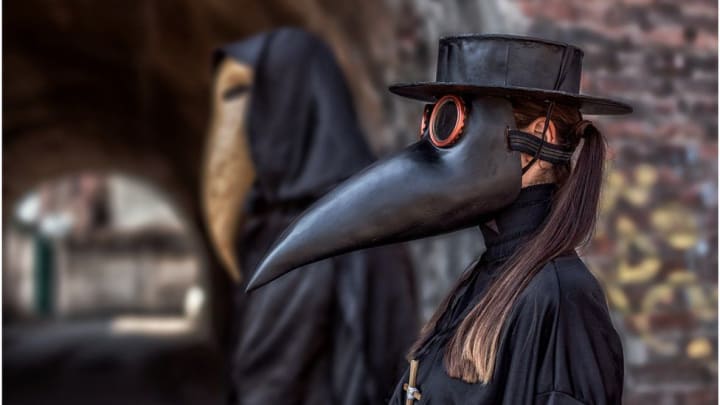
By cover of night, Nostradamus packed his mule and fled. He remained in hiding for ten years and when he returned to the scene, it was with a new talent: prognostication. He quickly gained respect for his gift of prophecy. He married a rich widow and had six more children. His future seemed bright.
On the top floor of a house in Salon, Nostradamus created his personal library of books on the occult. His study was accessed by a stone spiral staircase and was off-limits to others. Often staying up all night long, his neighbors noticed the light of his candles at all hours. He needed only four to five hours sleep. The rest of his time, he spent on his work.
Using the Oracle of Delphi as a model (See Part #1 of this 5 part series ⚡😁👍), Nostradamus sat on a tripod above a brass bowl of steaming water and fragrant oils. His focus was aided by staring into the water, or at a fire. He then searched horoscopes from the past, charting the heavenly bodies so he would know where they were on specific dates. He prayed for divine help in determining names and dates, and then he would further develop his ideas through meditation, with then still more astrological research, and also aided by obscure tricks he had learned during his travels.
When he eventually began writing down his visions, he shaped them into verse. His greatest masterpiece is called Centuries, a collection of a thousand predictions foretelling the entire future of humanity. Many of his prophecies are mysterious, much like the Oracle of Delphi’s verses. Other times, however, he was very specific. Authorities would consider his writings to be pagan, which was punishable by death, so Nostradamus wrote in several different languages and he scrambled his words. He also made certain verses vague to prevent hurting people’s feelings. To understand Centuries really requires a knowledge of esoteric French wordplay, as well as Greek, Latin, Hebrew, Arabic, and Italian.
Perhaps his most famous prediction was when he foretold the death of Henry II, the King of France. It was an unusual demise.
"The young lion shall overcome the old
"In warlike fields in single duel:
"In a cage of gold he will pierce his eyes,
"Two wounds one then die, a cruel death."

Four years later, Henry competed in a jousting tournament with the captain of the Scottish Guards. The young knight’s jousting spear broke, and one splinter pierced the king’s throat. Another piece plunged through the monarch's golden helmet, straight into his eye, skewering his brain. Henry died later that night in horrible plain.
It was that prediction’s astonishing accuracy that made Nostradamus famous (notorious) at the age of fifty-six.
Many concluded he was a witch under Satan’s sway. Some people theorized that he had plotted to kill the king. The same night as Henry’s death, an angry mob burned Nostradamus in effigy. His house was regularly stoned after that, often causing him to relocate elsewhere.
The majority of people, however, found Nostradamus fascinating. The reading public devoured his books. Some thought he was the voice of God Himself.
Eventually, Queen Catherine brought him to Paris to become her personal astrologer. He did horoscopes for all her children. King Charles IX gave him the title of Counselor and Physician in Ordinary. He became the toast of all European courts.
He was often tested. Once, the lord of a grand manor asked Nostradamus which of two pigs would be served for dinner that night. Nostradamus said, “We will eat the black pig, but a wolf will eat the white.” The Lord then secretly ordered his cook to slay the white pig. When the cook went to do as ordered, he found the Lord’s pet wolf cub eating the white pig, so he hastily fetched the black one to prepare for the meal. Later that evening, he was forced to admit that Nostradamus had been right.
Most scholars of Nostradamus believe roughly half of his prophecies came true. But they disagree about which predictions apply to which events. Nostradamus seemed to foretell the date of the great London fire (1666) and he got many details right about the French Revolution (1789-1799). He predicted the breakthroughs of Louis Pasteur (born 1822) and saw the rise of Adolph Hitler (born 1889), who he called “a captain of Greater Germany.”
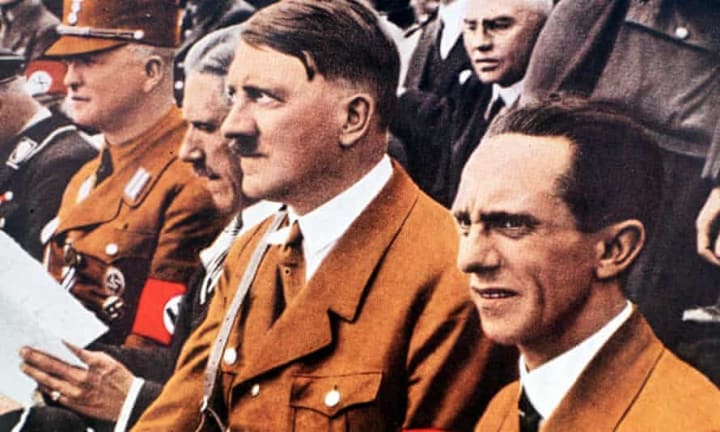
In the 1940s, the wife of Joseph Goebbels was obsessed with the occult. She found Nostradamus’s references to Germany and showed them to Goebbels, Hitler’s Minister of Propaganda. Goebbels interpreted the prophecies to mean that the Third Reich would rule the world. He had leaflets of Nostradamus’s predictions printed up, slanted to foretell Germany’s victory, and had them dropped over Belgium and France.
Some of Nostradamus’s visions are quite murky. He predicted three Antichrists who will push humanity to the brink of total destruction. The first two Antichrists are generally agreed to have been French emperor Napoleon, and Adolf Hitler, leader of the Nazis. As to who the third Antichrist is: that is a subject of heated debate. Some have suggested it is Saddam Hussein.
Nostradamus refers numerous times to “the three brothers”, who are viewed to be the Kennedys. He seemed to foretell the moon landing in 1969; the Gulf War; the scourge of AIDS; civil war in Yugoslavia; the Hale-Bopp comet; and the death of England’s Princess Diana. He wrote, “the nine set apart… their fate determined on departure,” which fits the Challenger shuttle disaster.

Many movies have been made about Nostradamus, including The Man Who Saw Tomorrow, which caused some panic when it debuted in May of 1988. Some West Coast Americans worried that “the Big One” was eminent, a titanic earthquake that would devastate California.
Countless commentaries have been written about him. Nostradamus’s books have been available in print for hundreds of years, a distinction shared only by the Bible and a few others.
In 1566, Nostradamus gave his last prediction, foretelling his own final moments.
“On his return from the Embassy, the King’s gift put in pace.
“He will do nothing more.
“He will be gone to God.
“Close relatives, friends, brothers by blood will find him completely dead near the bed and the bench.”
And it happened just as he said. After returning from a trip to Paris, to the court of King Charles, he died alone. His family found his body lying across the bench he’d built to help himself get in and out of bed. He was sixty-three.

⚡_________________⚡
This concludes part 3 of this 5-part series! Please LIKE and do SUBSCRIBE if you’d enjoyed this.
Here is part 4 👇
ABOUT ME: I’m sixty-years old. A year ago, I started suffering from seizures. I haven’t worked since, and I can no longer drive. I have meds that mostly protect my brain from these assaults, but every so often, without warning, I’ll have a ‘breakthrough seizure’… and they wreak havoc on my memory. Since I can’t work and haven’t been able to secure disability, I currently have no income. If you tip or make a pledge to me, I would be eternally grateful… and I will do my best to entertain!
Thank you kindly for your support!
_____________Bolt ⚡

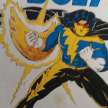




Comments
There are no comments for this story
Be the first to respond and start the conversation.